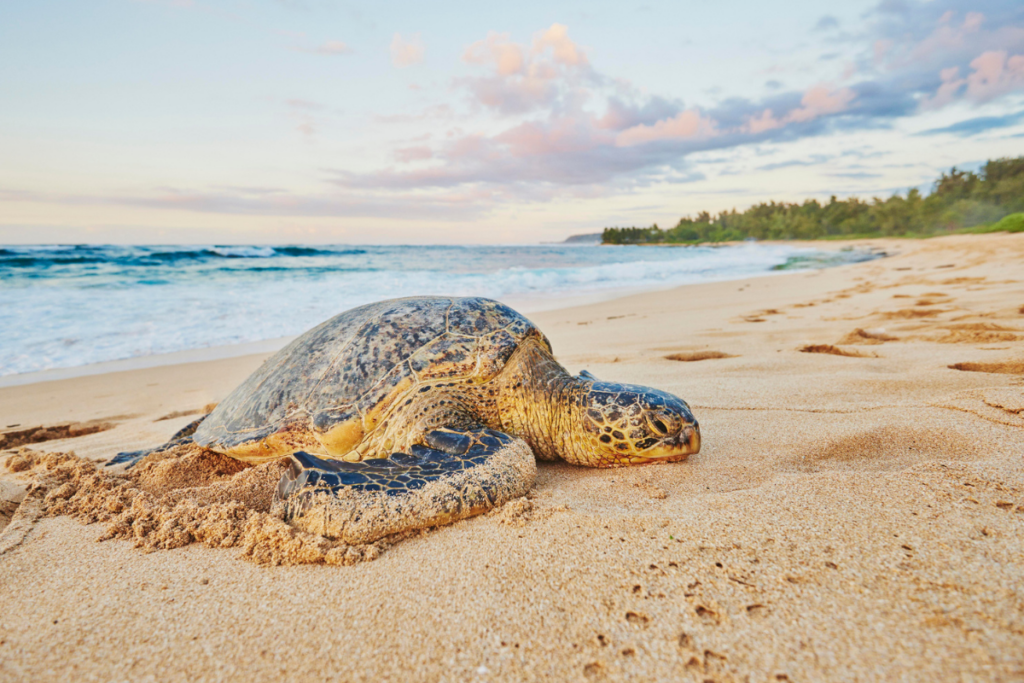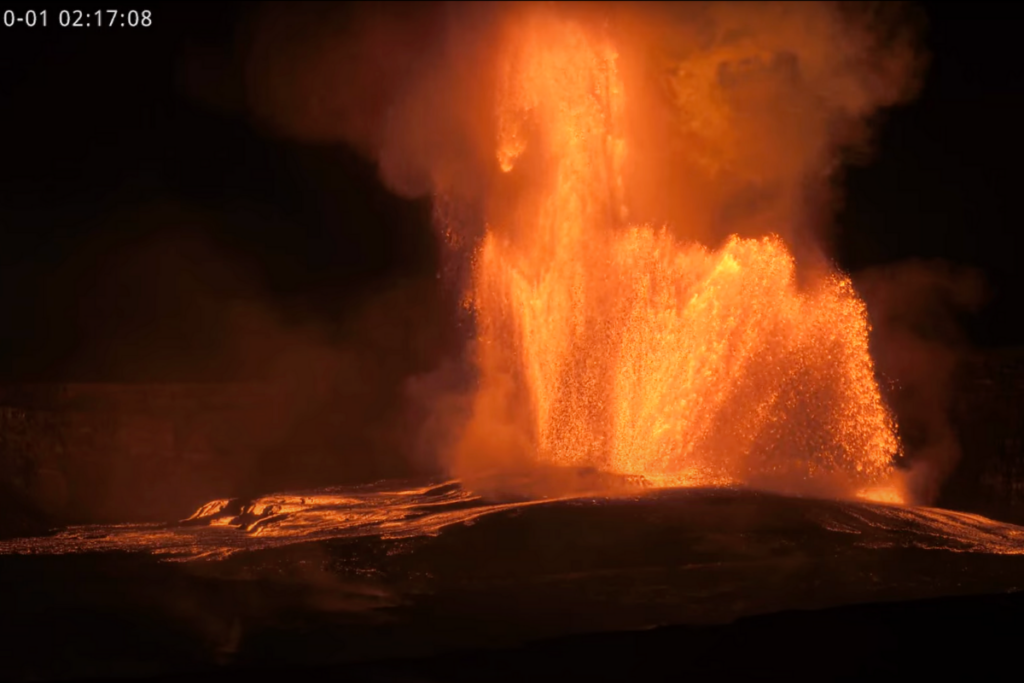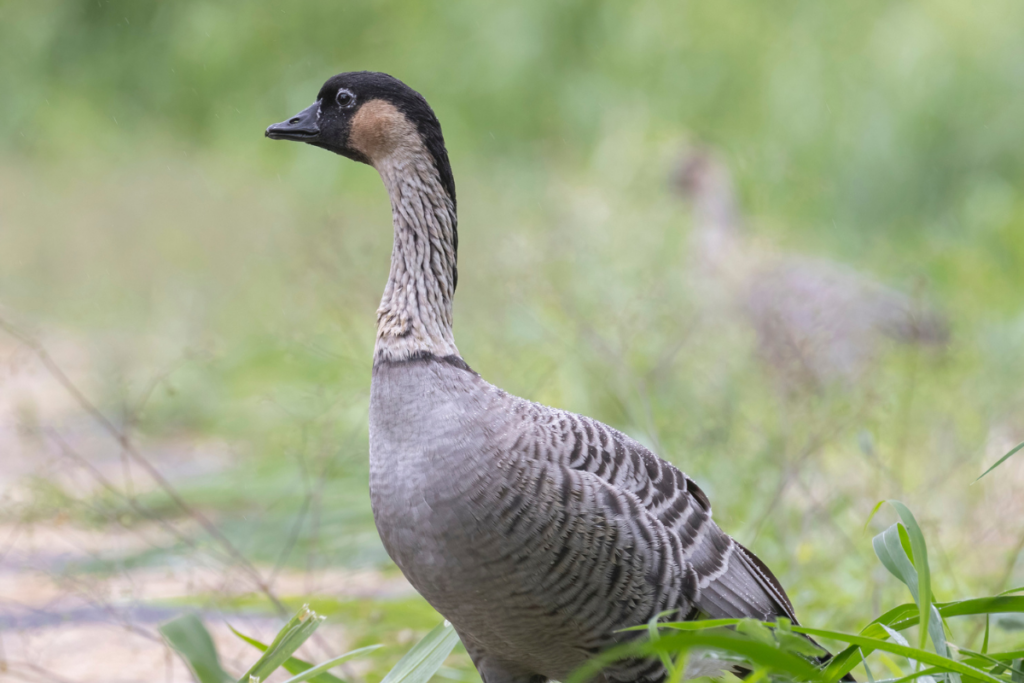Sea Turtle Nesting Season in Hawaiʻi is from August to November; Here’s What You Need to Know
These are helpful tips from the state Department of Land and Natural Resources.

August may mark the start of school in Hawaiʻi—but it’s also sea turtle nesting season.
Since 2020 nesting activity by Hawaiian green sea turtles, or honu, has increased every year across the state—a hopeful sign for this threatened and protected species.
But that also means there may be more hatchlings on Hawaiʻi beaches, and beachgoers need to be that much more cautious to ensure these tiny turtles make it safely to the ocean.
READ MORE: Your Guide to Viewing Hawaiʻi’s Endangered Wildlife
From now until November, adult female sea turtles return to sandy beaches across the Islands to lay their eggs. Honu nests typically take about 60 days to hatch. (Temperature affects incubation time.)
Once hatchlings emerge, they use the brightness of the stars and moonlight to find their way to the open ocean. That means, this journey can easily get disrupted by human activity: distraction by lights, driving on the beach, illegal campfires.

From August to November, adult female sea turtles return to sandy beaches across the Islands to lay their eggs.
Photo: Courtesy of the state Department of Land and Natural Resources
All sea turtles in Hawaiʻi are protected by the Endangered Species Act and, in old Hawaiʻi, were thought to be the property of aliʻi, or chiefs. For some in Hawaiʻi, honu are ‘aumākua, or spiritual guardians.
Green sea turtles are found throughout the world, but the Hawaiian green sea turtle live only in the Hawaiian archipelago. It’s the largest hard-shelled sea turtle in the world and can weigh over 350 pounds, meaure 4 feet in length and live beyond 70 years.
Consider this: Only about one in a thousand hatchlings will reach adulthood. Those aren’t great odds. But there are ways you can help.
The state Department of Land and Natural Resources provided these tips for beachgoers to help:
- Give turtles and nests plenty of space. If you see a nesting sea turtle or a marked nest, stay back and observe quietly from a distance, at least 10 feet. Sea turtles in Hawaiʻi are protected under federal law. Never pick up the hatchlings and place them into the ocean. The crawl through the sand helps hatchlings, preparing them for when they mature and return to nest as adults. If you see hatchlings, call the NOAA hotline so researchers can follow up.
- No driving on beaches. Vehicles compact the sand, which can trap hatchlings or crush unseen nests. Driving on the beach is not only harmful, it’s illegal.
- Turn off beach-facing lights. Artificial lighting disorients hatchlings, leading them away from the ocean. If you live near the shore, turn off lights visible from the beach during nesting and hatching season.
- Use red lights at night. If you must be on the beach after dark, use only red-filtered flashlights. Regular white lights can confuse hatchlings, drawing them away from the ocean.
- No campfires on the beach. Campfires are illegal on Hawai‘i’s beaches and are especially dangerous during nesting season. In past incidents, disoriented hatchlings have crawled into the fire pits and died.
If you’re interested in supporting efforts to protect honu, visit the Hawaiʻi Marine Animal Response. (You can volunteer with the organization, too.) Learn more about protecting sea turtles during nesting season at Mālama i nā Honu, a volunteer-based nonprofit organization. Report injured, dead or hatching turtles to the NOAA Marine Wildlife Hotline at (888) 256-9840. Learn more about sea turtles and find volunteer opportunities here.
Catherine Toth Fox is the former editor of HAWAIʻI Magazine and continues to contribute to the website and print publication.


